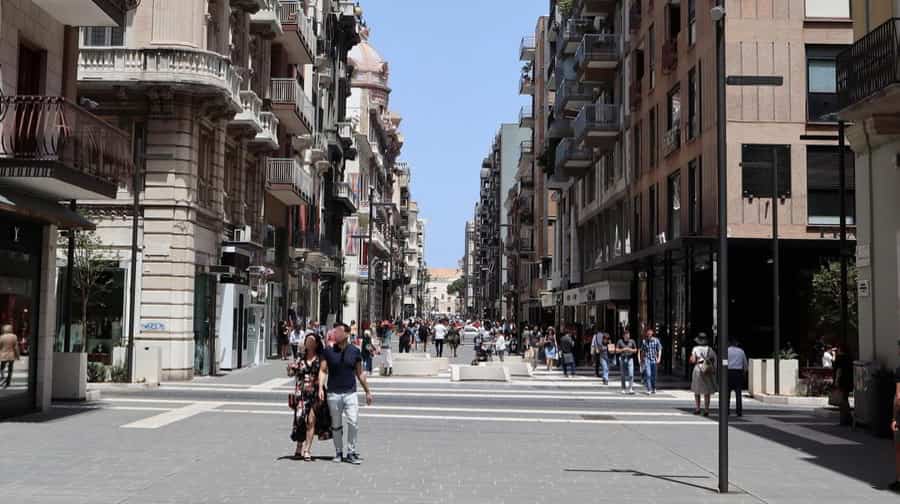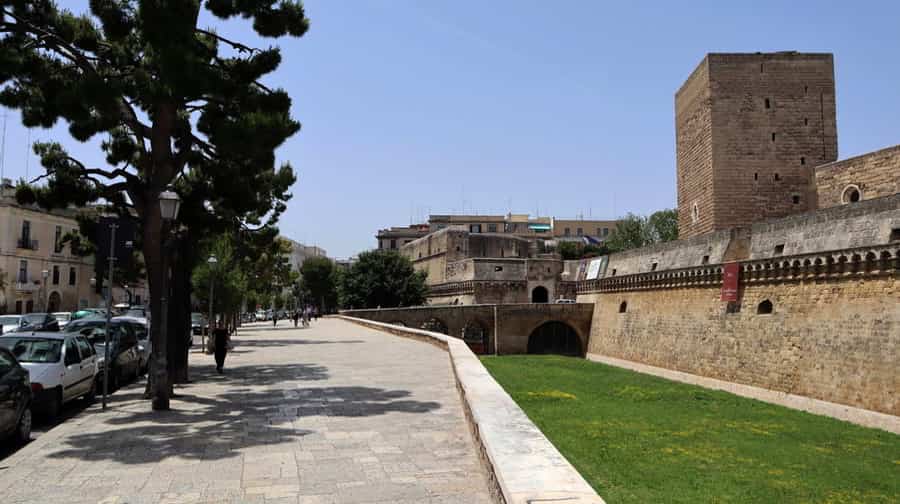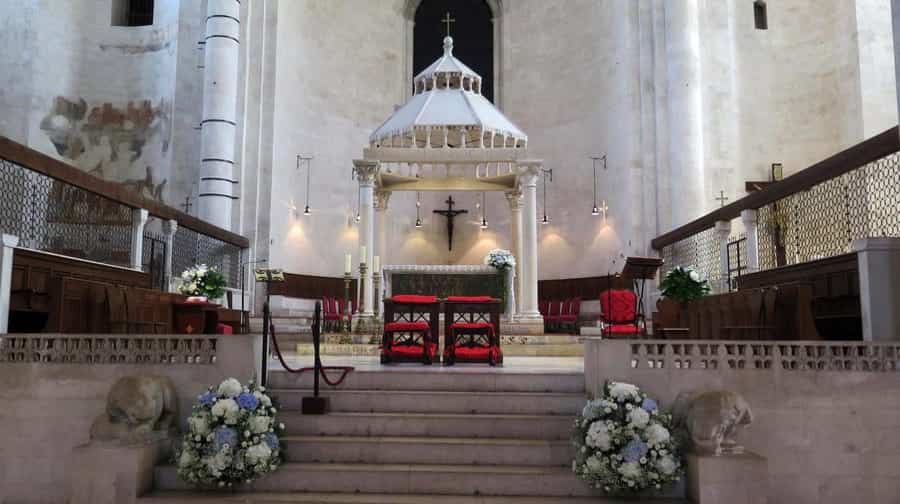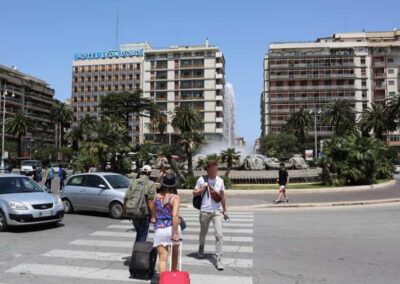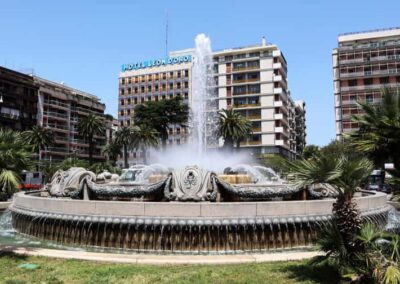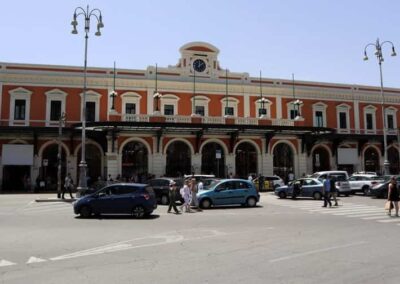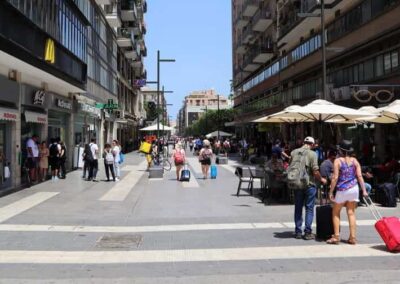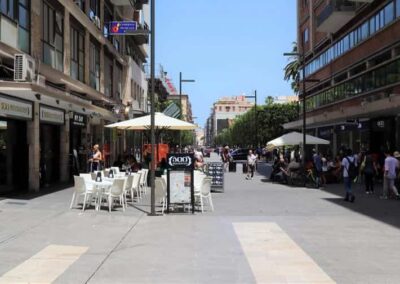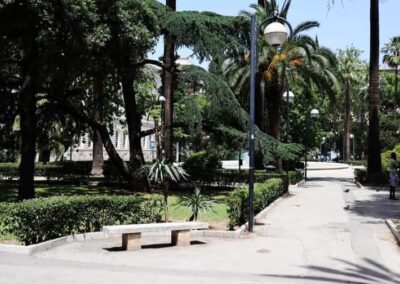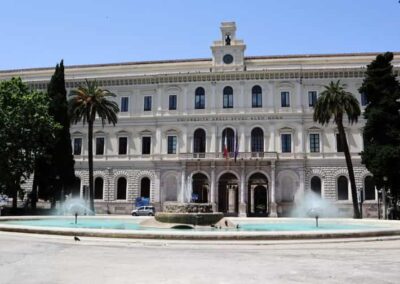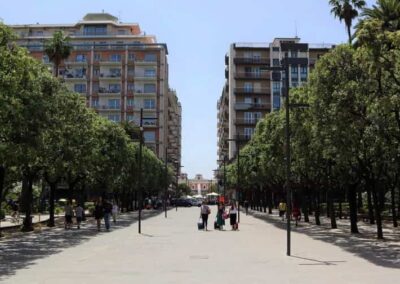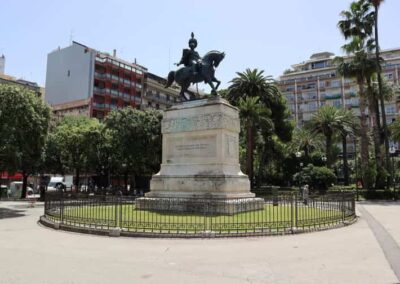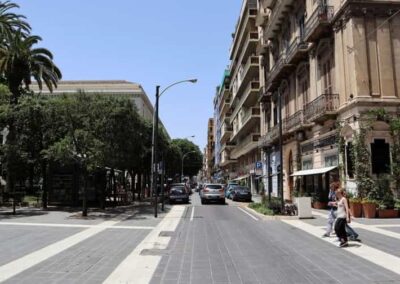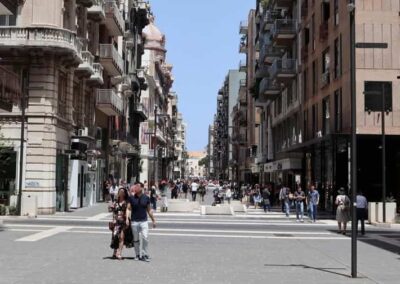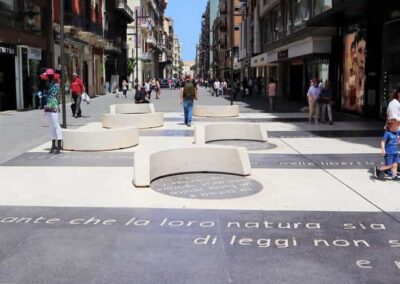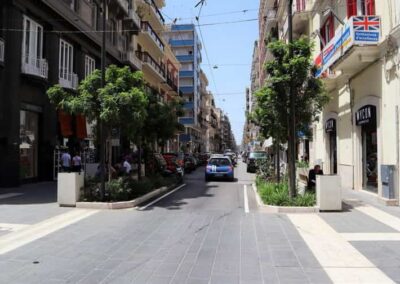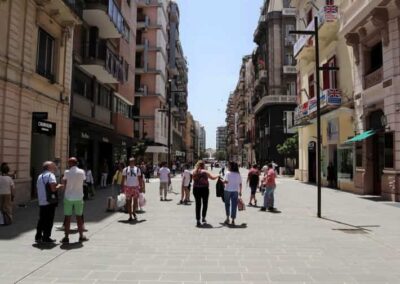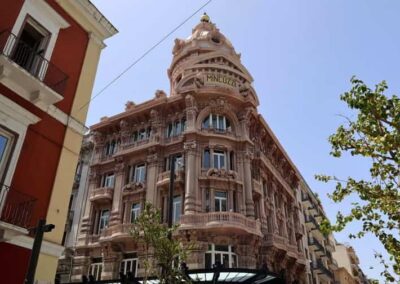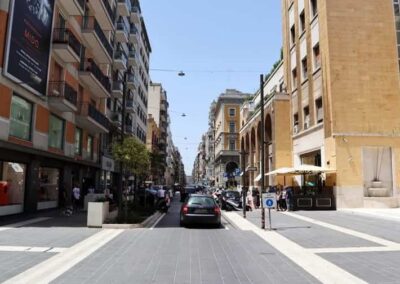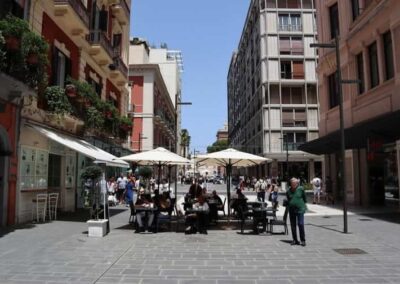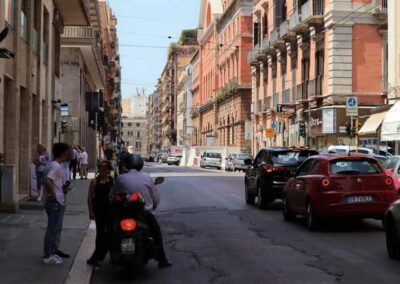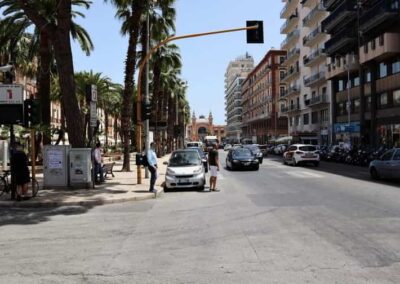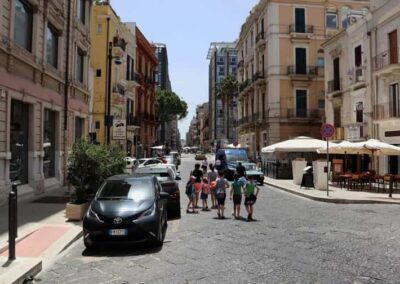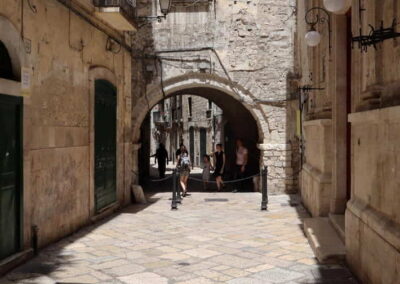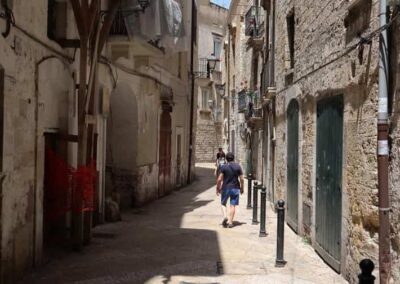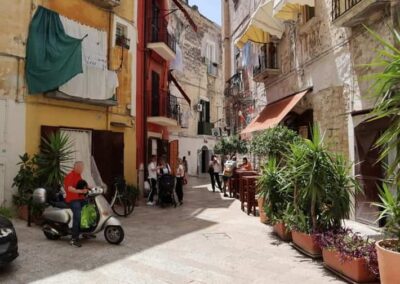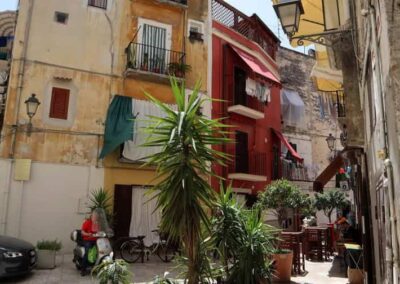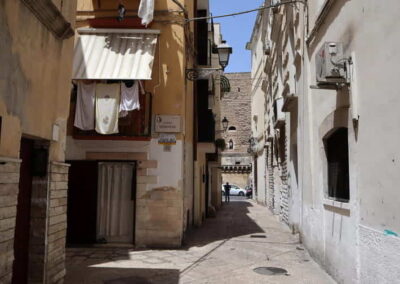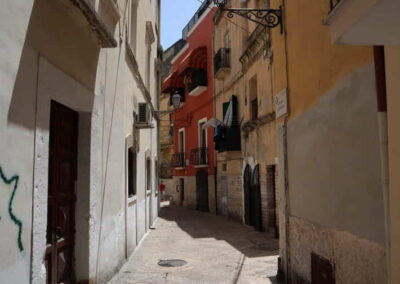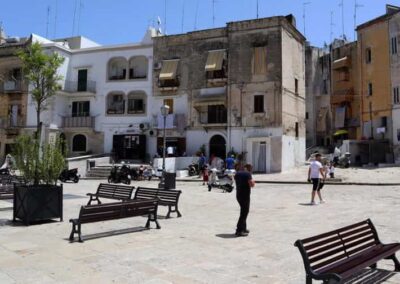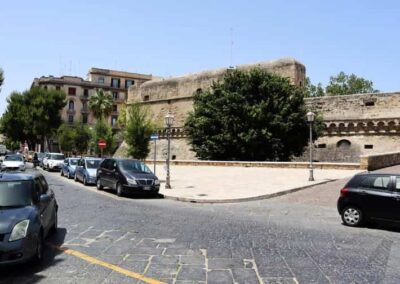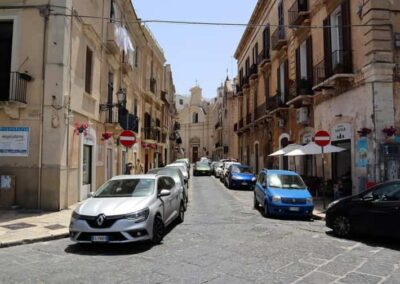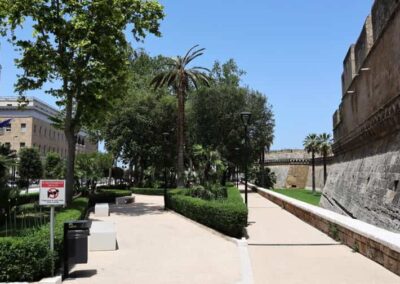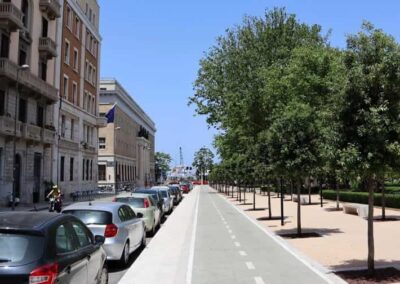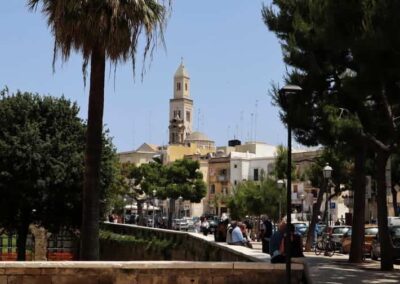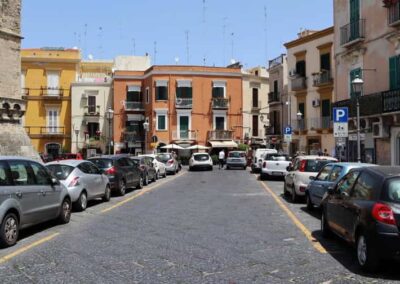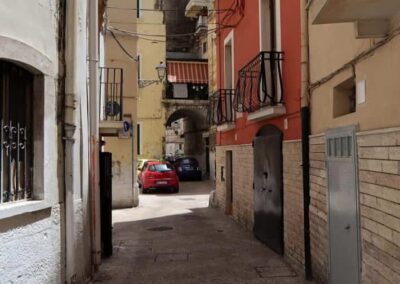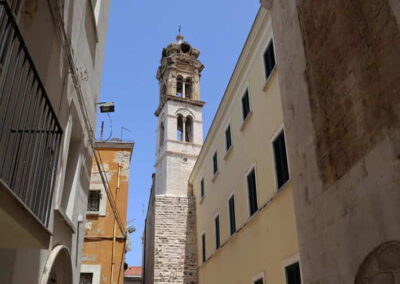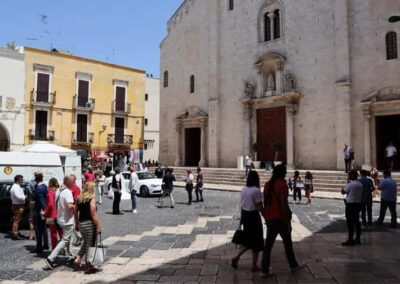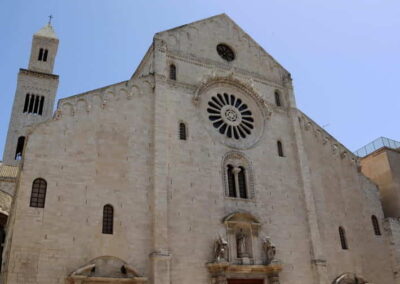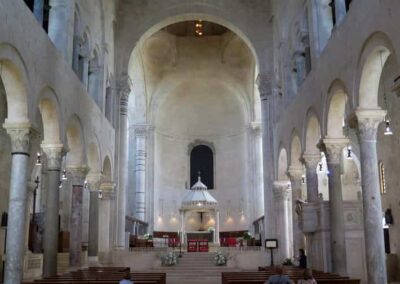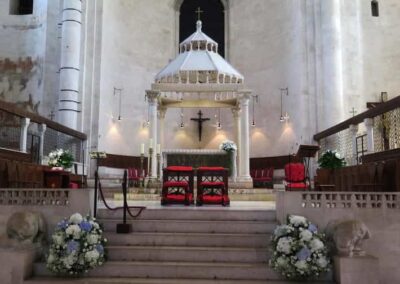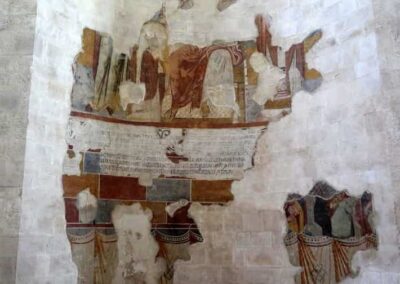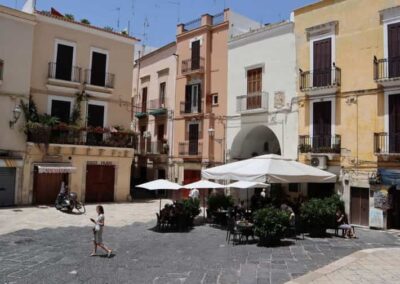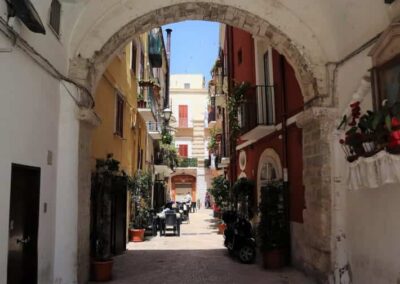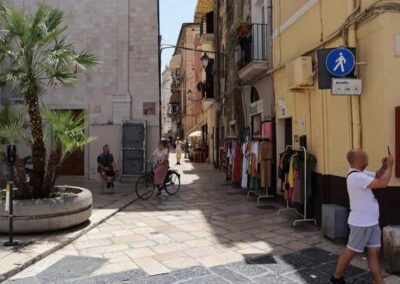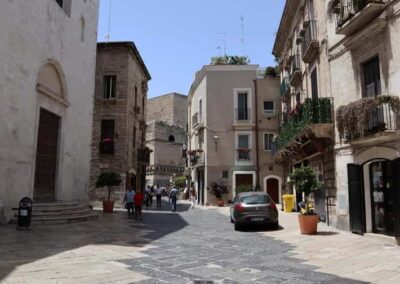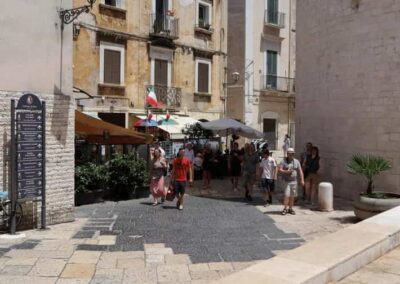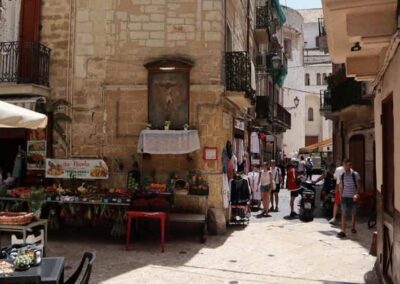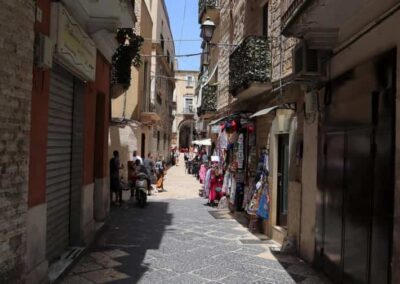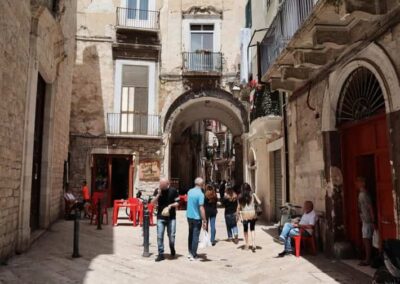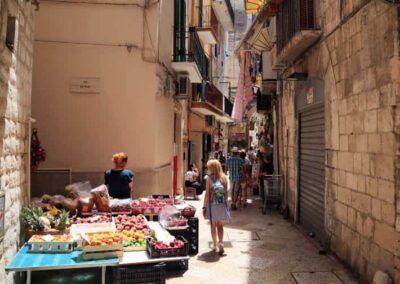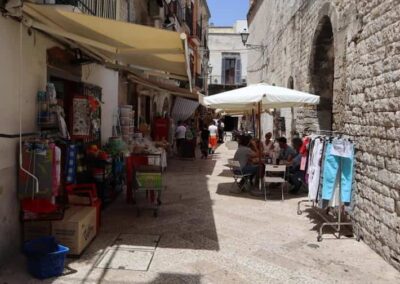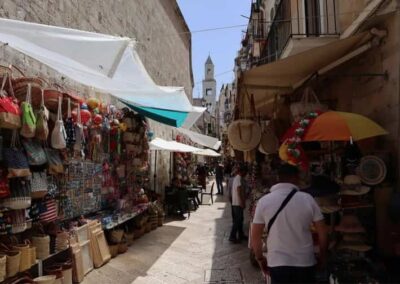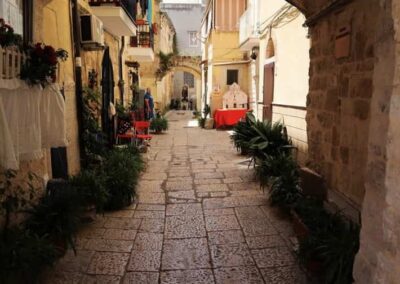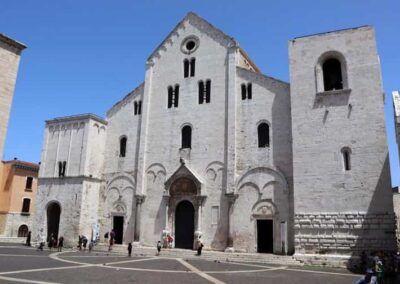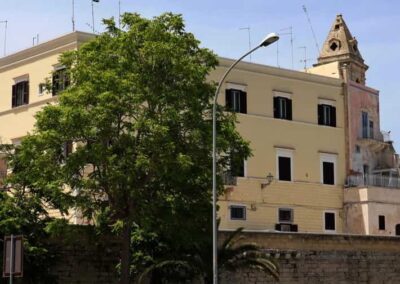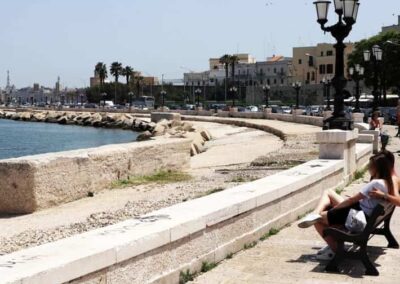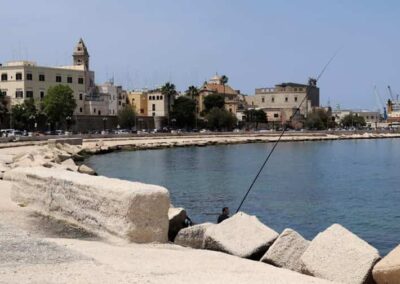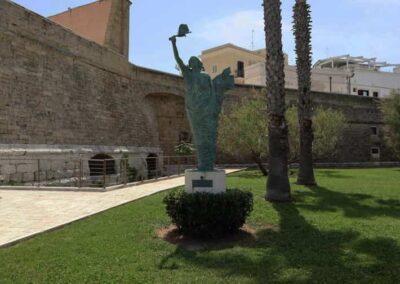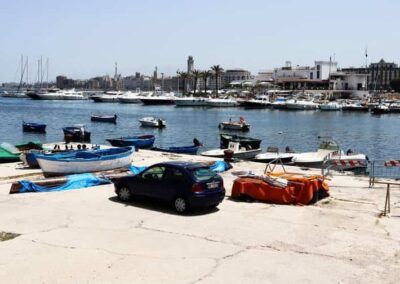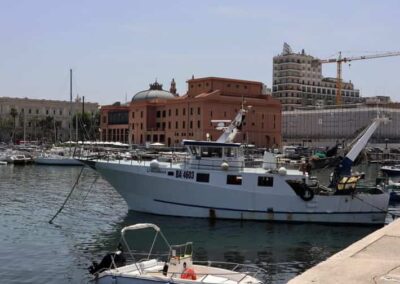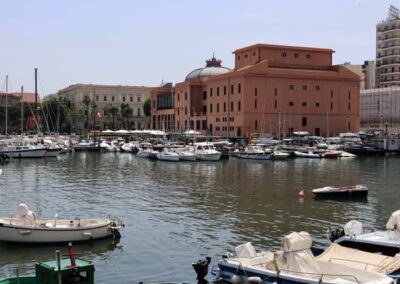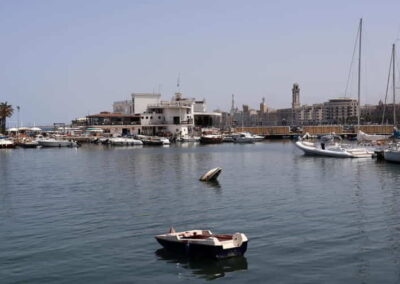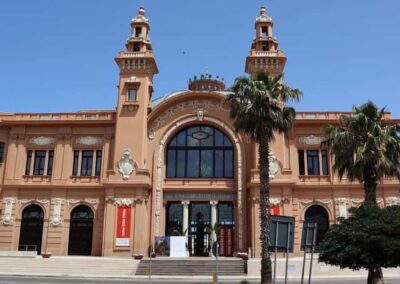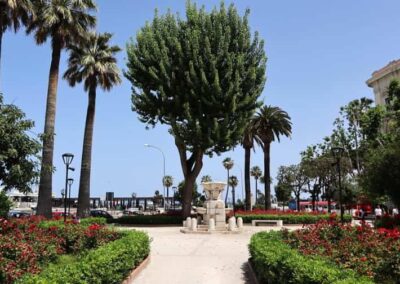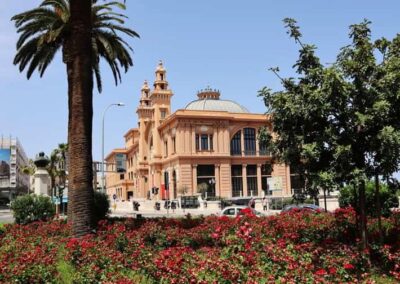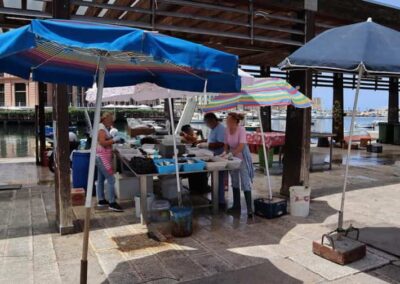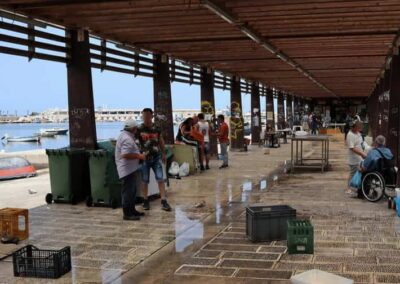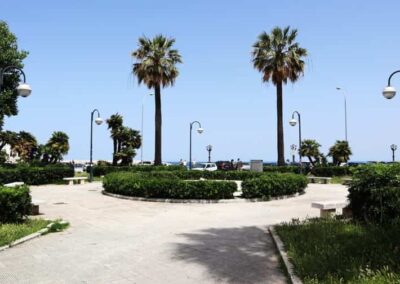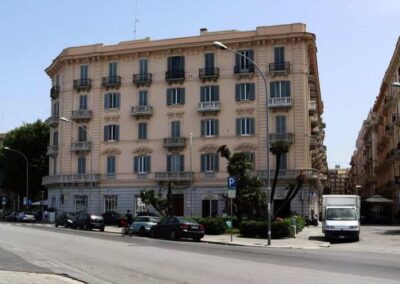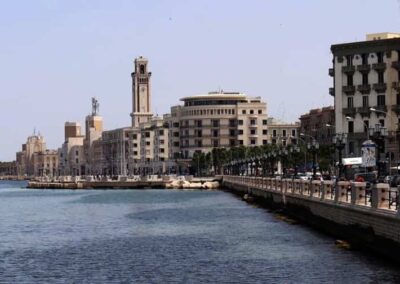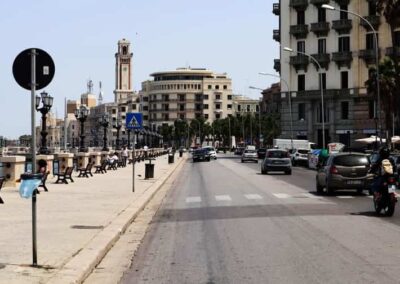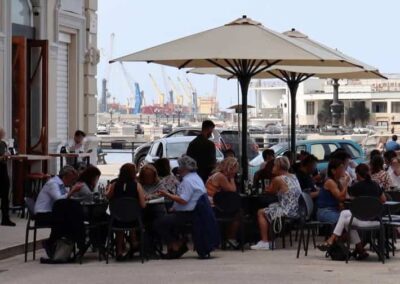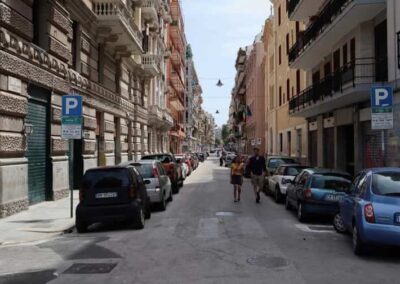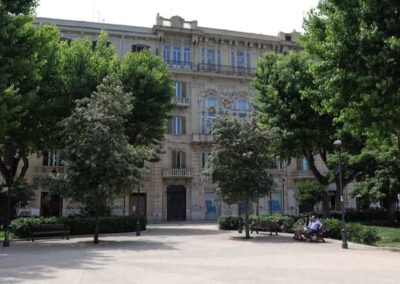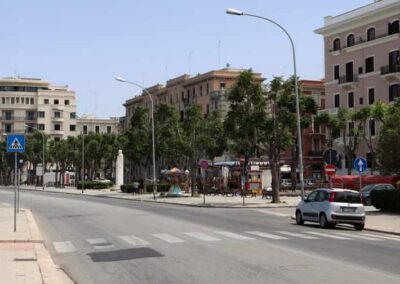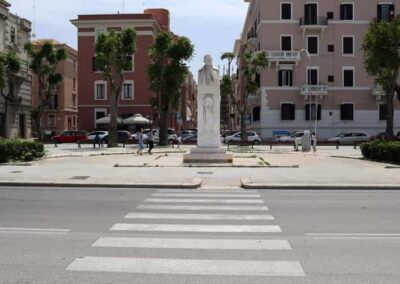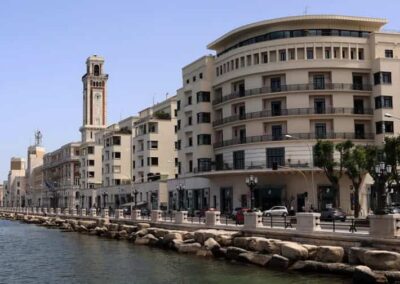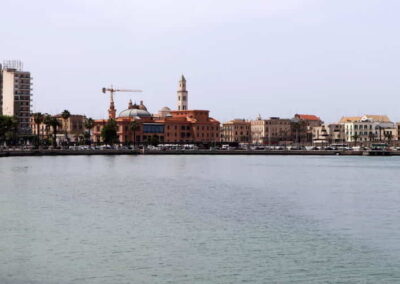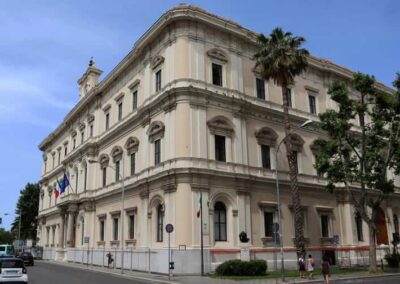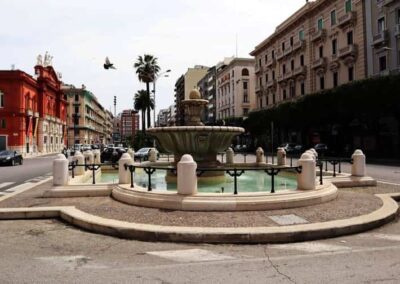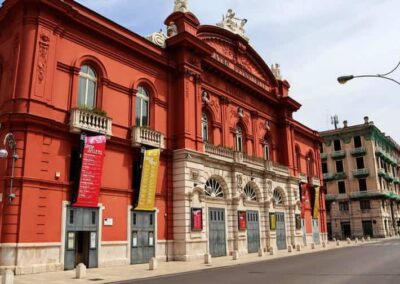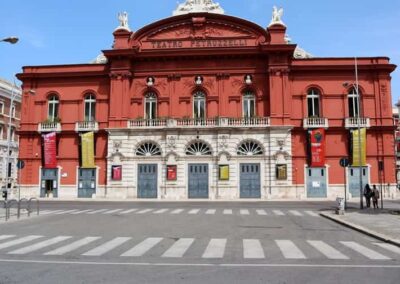HOME
THE REGIONS OF ITALY
PLACES IN ITALY
Italy in Photos
[language-switcher]
Via Sparano da Bari, 70123 Bari, Italy (June 2019)
Bari
Bari, the capital of the Apulia region in southern Italy, is a city that seamlessly blends ancient history with modern vibrancy. Situated on the Adriatic Sea, Bari is known for its rich cultural heritage, bustling port, and lively atmosphere. As one of Italy’s major cities, Bari offers a unique combination of historical landmarks, vibrant street life, and stunning coastal views. Bari’s historical centre, known as Bari Vecchia, is a labyrinth of narrow, winding streets that transport visitors back in time. This area is home to several significant landmarks, including the Basilica di San Nicola, a major pilgrimage site. The basilica, built in the 11th century, houses the relics of Saint Nicholas and is a prime example of Romanesque architecture. Nearby, the Bari Cathedral, or the Cathedral of San Sabino, stands as another architectural marvel from the 12th century, known for its impressive façade and beautiful interior. The Castello Normanno-Svevo, a medieval fortress originally built by the Normans and later expanded by the Swabians, is another must-see. This imposing structure offers insights into Bari’s strategic importance throughout history and provides panoramic views of the city and the sea. While Bari Vecchia offers a glimpse into the past, the modern part of the city, known as the Murat district, is a bustling area filled with shops, restaurants, and cafes. The main shopping street, Via Sparano, is lined with high-end boutiques and popular Italian fashion brands. Piazza del Ferrarese and Piazza Mercantile are vibrant squares where locals and tourists alike gather to enjoy the lively atmosphere, street performances, and open-air cafes.
Bari is also a cultural hub with a rich tradition in the performing arts. The Teatro Petruzzelli, one of the largest and most prestigious opera houses in Italy, hosts a variety of performances, from opera and ballet to contemporary music concerts. The city’s cultural calendar is packed with events, including the Bari International Film Festival, which attracts filmmakers and cinema enthusiasts from around the world. The culinary scene in Bari reflects its coastal location and rich agricultural hinterland. The city’s cuisine is renowned for its simplicity and use of fresh, local ingredients. Seafood is a staple, with dishes like “orecchiette alle cime di rapa” (pasta with turnip tops) and “riso, patate e cozze” (rice, potatoes, and mussels) being local favorites. The historic center is dotted with trattorias and street vendors offering a taste of authentic Apulian cuisine. The local focaccia, topped with fresh tomatoes and olives, is a must-try.
Bari’s port is one of the most important on the Adriatic Sea, serving as a major hub for commercial, passenger, and fishing activities. The port connects Italy with several destinations across the Adriatic and the Mediterranean, including Greece, Albania, and Croatia. The Lungomare, Bari’s scenic seafront promenade, is perfect for a leisurely stroll, offering stunning views of the sea and the city’s skyline. The promenade comes alive in the evenings, with locals and tourists enjoying the sea breeze, street food, and live music. Bari is home to the University of Bari Aldo Moro, one of the largest universities in southern Italy, which attracts students from across the region and beyond. The presence of the university contributes to the city’s vibrant and youthful atmosphere. Economically, Bari is a significant centre for commerce and industry, with its port playing a crucial role in trade and logistics. The city’s economy is diverse, encompassing agriculture, manufacturing, and services, which collectively drive its growth and development.
Worth a Visit
Via Sparano da Bari is the most elegant and well-known shopping street in the city of Bari, located in the Puglia region of southern Italy. Running through the heart of the city’s Murat district, this pedestrian-only avenue stretches from the historic Piazza Aldo Moro, near the central train station, all the way toward Corso Vittorio Emanuele and the old town (Bari Vecchia). Lined with palm trees, marble pavements, and stylish architecture, Via Sparano is more than just a commercial street, it’s a vibrant urban promenade and a symbol of Bari’s modern identity. The street is named after Giovanni Sparano, a notable figure in Bari’s history, and today it represents the city’s most fashionable and cosmopolitan side.
Located in the heart of Bari’s central Murattiano district, the Giardini di Piazza Umberto I offers an inviting urban retreat that marries history, horticulture, and everyday life in Southern Italy. This beloved public garden occupies a generous space between the train station and Via Sparano, the city’s main shopping boulevard. It stands as an unfenced green refuge owned by the Municipality of Bari, deeply woven into the fabric of the neighbourhood. Created through the union of two nineteenth-century gardens, one designed in 1866 by Neapolitan architect Giovanni Castelli, originally tied to the Palazzo Ateneo, and the other conceived later around a commemorative statue—the current layout has endured more than a century.
Situated in the atmospheric labyrinth of Bari Vecchia, Piazza Federico II di Svevia is a historic and visually striking open space that sits directly in front of the imposing Castello Normanno‑Svevo. Named in honour of the medieval Emperor Frederick II, who ordered the castle’s reconstruction in the 13th century, this piazza captures the architectural and civic spirit of Bari’s storied past. For much of its history, the square served as an informal vehicular space but has recently undergone a transformation into a pedestrian-friendly plaza. Local authorities have removed traffic and introduced elegant urban enhancements including fourteen C-shaped benches, a central planter with a young tree, bicycle racks, and litter bins—creating a refreshed space for public gathering and leisure
The Basilica Cattedrale Metropolitana di San Sabino in Bari, often referred to simply as Bari Cathedral, is a remarkable testimony to Puglia’s medieval Romanesque heritage and the spiritual heart of the Archdiocese of Bari–Bitonto. Dedicated to Saint Sabinus of Canosa, whose relics were transferred to Bari in the 9th century, the cathedral has stood as a guardian of faith and history for over eight centuries. Constructed between the late 12th and early 13th centuries by Archbishop Rainaldo on the ruins of a Byzantine cathedral destroyed in 1156, the current building reflects the influence of the nearby Basilica di San Nicola—an inspiration in both style and symbolism. Consecrated in 1292, the cathedral was built using salvaged materials from earlier structures, blending continuity and renewal in its very stones.
Photo Gallery of Walk 1 – Piazza Aldo Moro to Via Benedetto Petrone
Approximately 1.10 km – 0.68 miles
The walk starts in Piazza Aldo Moro – Via Sparano da Bari – Piazza Umberto I – Fontana Piazza Umberto I – Giardini di Piazza Umberto I – Via Sparano da Bari – Via Principe Amedeo – Via Sparano da Bari – Palazzo Mincuzzi, Via Sparano da Bari – Via Sparano da Bari – Via Nicolò Putignani – Via Sparano da Bari – Corso Vittorio Emanuele – Via Benedetto Petrone
Photo Gallery of Walk 2 – Strada S. Giuseppe to Chiesa di San Gregorio, Piazzetta 62 Marina
Approximately 1.02 km – 0.64 miles
The walk starts in Strada S. Giuseppe – Strada Bianchi-Dottula – Largo Albicocca – Strada Bianchi-Dottula – Corte Macario – Strada Attolini – Piazza Federico II di Svevia – Via Boemondo – Piazza Federico II di Svevia – Piazza Giuseppe Massari – Piazza Federico II di Svevia – Strada Attolini – Strada S. Giacomo – Piazza dell’Odegitria – Basilica Cattedrale Metropolitana di San Sabino, Piazza dell’Odegitria – Piazza dell’Odegitria – Piazzetta Bisanzio e Rainaldo – Strada del Carmine – Piazzetta 62 Marinai – Chiesa di San Gregorio, Piazzetta 62 Marinai
Photo Gallery of Walk 3 – Lungomare Imperatore Augusto to Corso Cavour
Approximately 2.85 km – 1.77 miles
The walk starts in Lungomare Imperatore Augusto – Piazza IV Novembre – Lungomare Araldo di Crollalanza – Molo S. Nicola – Piazza Eroi del Mare – Lungomare Araldo di Crollalanza – Largo Adua – Via Abbrescia – Lungomare Araldo di Crollalanza – walk back along Lungomare Araldo di Crollalanza to Corso Cavour
COPYRIGHT © 2018-2025 ITALY IN PHOTOS - ALL RIGHTS RESERVED
